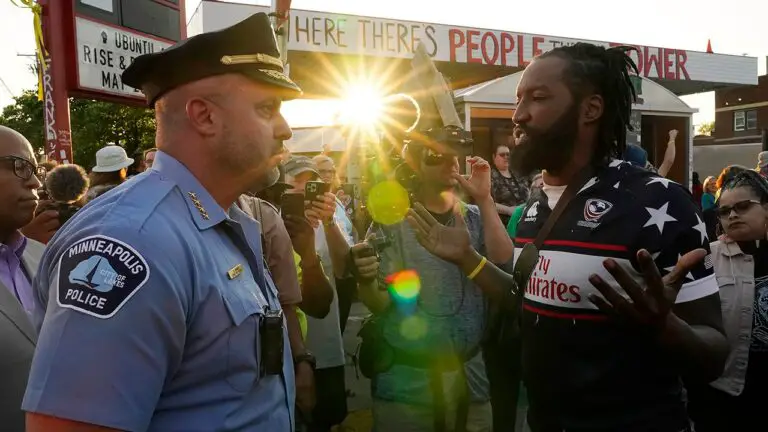Minneapolis Police Department Faces Historic Staffing Crisis
Three years after George Floyd’s tragic death, the Minneapolis Police Department is grappling with a significant staffing shortage, hitting its lowest levels in four decades. A recent analysis by the Minneapolis Star Tribune reveals that the department’s ratio of police officers to the population they serve is the lowest among 22 major American cities.
Currently, Minneapolis has only 585 sworn officers, just a bit more than its neighboring St. Paul Police Department, which serves 120,000 fewer residents. The situation is so dire that some precincts have only four officers assigned to patrol entire neighborhoods. Residents seeking help with police reports in person are often met with locked doors and makeshift signs instructing them to call 911 in emergencies.
According to the Star Tribune, by the end of last year, only Portland, Oregon, had a lower ratio of officers to residents. Portland had 1.3 officers per 1,000 residents compared to Minneapolis’s 1.4, with the national average being 2.4 officers per 1,000 residents.
Minneapolis Police Chief Brian O’Hara expressed his concerns, calling the situation “absolutely not sustainable.” He acknowledged the efforts of other law enforcement agencies, such as the Minnesota Bureau of Criminal Apprehension and Hennepin County Sheriff’s Office, in addressing violent crime during these turbulent times.
At the time of George Floyd’s death, the Minneapolis Police Department had around 900 sworn officers. However, following widespread protests and the rise of the Black Lives Matter movement, the department saw a mass exodus of resignations, retirements, and officers taking leave for mental and physical health reasons.
The city’s charter dictates that the department must maintain a minimum of 731 officers. Despite a Minnesota Supreme Court ruling that the city council had allocated enough funding to reach this number, the department has struggled to recruit new officers, leaving a significant gap.
Doug Seaton, president of the Upper Midwest Law Center, which represented residents in a lawsuit against the city, characterized the issue as “self-induced.” He noted that the city’s actions had deterred potential recruits.
The shortage has also prevented the relaunch of the disbanded community engagement unit, which Chief O’Hara considers crucial for rebuilding trust and proactive policing to combat crime. Civil analysts have had to assist with video analysis and clerical work in ongoing criminal investigations due to the lack of officers.
In response to these challenges, activists have been advocating for reform measures that reduce reliance on the police and emphasize mental health services. The pilot program of Minneapolis’ Behavioral Crisis Response teams has been diverting thousands of calls traditionally handled by the police.
While the situation remains challenging, efforts to address the staffing crisis continue, and the city grapples with finding solutions to ensure the safety and well-being of its residents.

